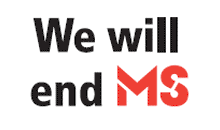Paleo Diet: Is it Effective for Seniors and Chronic Conditions?
Could our sinewy caveman cousins have gotten it right, or is the Paleo diet just a really enduring fad? Also known as Hunter-Gatherer or Caveman Diet, the Paleo Diet is modeled after early human foraging of wild plants and animals. To emulate a caveman diet, eat whatever was available to the caveman; unprocessed food. Organic vegetables and meats, eggs and fish lay at the foundation of the food pyramid, and fruits, berries, nuts and seeds at the top. Grains (even whole grains), beans, legumes and refined sugars are forbidden. Cavemen didn’t eat dairy (although a post-modern version includes some dairy and some carbohydrate from root vegetables.)
Dr. Terry Wahls was diagnosed with MS at age 44. She follows the Paleo diet to ensure the efficient functioning of her mitochondria, the power plants of cells. According to Wahls during her TED presentation, if you feed your mitrochondria, you can probably reduce the symptoms of most chronic diseases, whether it’s diabetes, heart disease or mental health problems. Within five months of feeding her body the specific nutrients it needed from foods rather than synthetic supplements, she reversed her symptoms of fatigue and immobility and even rode a bike.
At first glance, the Paleo plan sounds a lot like the Atkins diet but there are several important differences, namely that Atkins doesn’t care where your meat comes from. Paleo is more particular.
Pasture-raised animal meat – Eat meat, eggs and fish but only choose grass-fed animals that were raised on pasture instead of factory farms. Pasture-raised animal byproducts are more nutritious. Meat from grass-fed animals is two to four times more potent in omega-3 fatty acids than meat from grain-fed animals. Fish should be wild not farmed.
Good fat is okay – healthy fats from olive oil or coconut oil is encouraged for its healing properties. Omega 6 fatty acids are restricted because they have been found to increase risk of heart disease. Sunflower, safflower, grape seed, soybean, corn and other vegetable oils high in omega 6 contribute to chronic inflammation which leads to heart disease, joint pain, skin problems and diabetes.
Eliminate Grains – even small amounts of grain is bad for you. Perhaps the worst thing to happen to us health wise was replacing a pre-agriculture diet with a grain-based diet around 10,000 years ago. It led to a modern diet high in saturated fats and processed, refined foods, which lead to obesity and chronic disease conditions like diabetes, depression and celiac disease. Heart disease is the leading cause of death in the U.S. today, and diabetes is number 7.
Supporters of the Paleo diet advocate its superiority over Mediterranean, diabetic or typical western diets for weight loss and lowering the risk of heart disease, type 2 diabetes and other chronic disease.
Type 2 diabetics are unable to produce enough insulin, the hormone that breaks down the sugar in your blood stream and converts it to glucose energy. Buildup of glucose in the blood can lead to diabetic complications affecting a person’s cardiovascular health, mental wellbeing, neuropathy leading to mobility problems, blood pressure, and other eye, skin and oral health problems.
By sticking to a low sugar diet, diabetics and prediabetics have less glucose to metabolize. Limiting carbs limits the need to convert carbs, which helps control diabetic lows caused by swings in blood sugar levels, a condition that is typically accompanied by food cravings and an uncontrollable urge to eat.
Similarly, studies have linked insulin to tumor growth. Limit carbs, limit insulin production, inhibit tumor growth. Stored glucose has been shown to feed cancer. Refined carbs not only feed cancer cells but they also suppress the immune system. The National Brain Tumor Foundation recently published a food guide advising patients to avoid low fat diets and refined sugar and carbs, “The Healing Power of Your Fork: A Brain Tumor Survivor’s Eating Plan”.
Grain-free diets are recommended treatment for common food allergies to dairy, wheat and gluten, and other chronic conditions such as IBS. Going Paleo has the restorative potential to repair the gut by eliminating hard to digest sugars and grains that cause inflammation and bloating.
Not everyone agrees with the Paleo plan. It ranked among the lowest in the U.S. News & World Report’s Best Diets 2012, a rating of 25 different diet plans. Experts found it questionable that you could exclude two entire food groups – dairy and grains – and still get all the necessary nutrients. Red blood cells and some brain cells need glucose to function. Eating too much protein can over time lead to unhealthy amounts of ammonia, higher cortisol levels and vitamin A depletion.
It’s important to get the food group ratios right, which depends on your individual needs and whether your goals are weight loss or rehabilitation. Dr. Wahls eats three dinner plates of leafy greens and colored vegetables each day to treat her MS. Read a book like Eat to Boost Your Immunity by Kirsten Hartvig to figure out which super foods to include in your diet.




 and get Cash rewards!
and get Cash rewards!